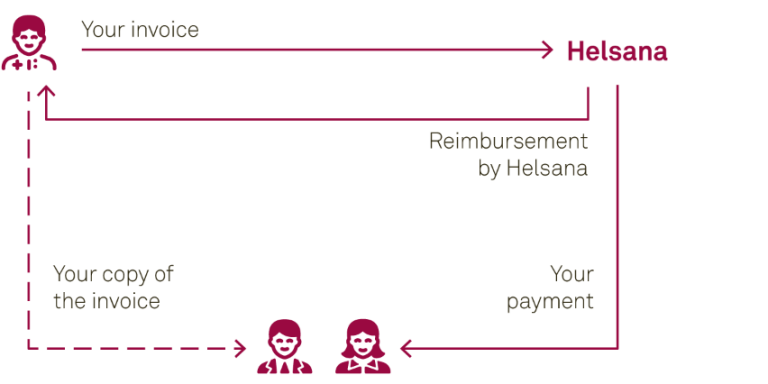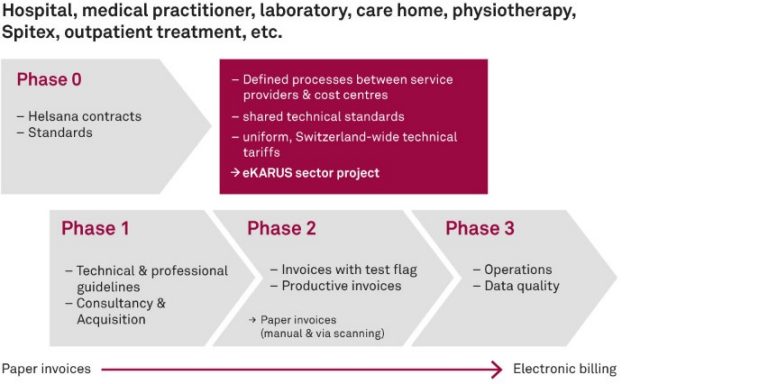Electronic data exchange
Exchanging data electronically makes processes more efficient and improves the quality of the data. This has various advantages for patients, service providers and insurers.
Advantages
We estimate that over ten million Swiss francs can be saved through process optimisation and e-connectivity with service providers (pharmacies, doctors, laboratories, hospitals, Spitex, care homes, etc.). Money that is ultimately passed on to premium payers.
Advantages for the patient
In the "tiers payant" system, service providers bill us directly. You as the patient only receive an invoice from us for your share of the costs. You receive a copy of the medical bill directly from the service provider.

Advantages for service providers
This joint billing method between service providers and cost centres optimises our processes, allowing data quality to be improved. This in turn reduces administrative costs on both sides to the benefit of everyone involved.
Advantages for the insurer
This efficient billing method between service providers and cost centres optimises our processes and improves data quality. Fewer administrative resources are tied up as a result, thereby keeping administrative costs low.
Data protection
For the Helsana Group, your privacy is of paramount importance. We implement strict controls and the latest encryption and transmission technology to guarantee data security and data protection.
Connection phases
Our electronic connections are intended to achieve a high level of automation and excellent data quality, with the aim of streamlining our processes and improving efficiency.
Requirements
The best conditions for electronic connectivity are:
- Processes defined and established jointly between service providers and cost centres
- Recognised nationwide technical industry standard (XML)
- Single tariff structure valid throughout Switzerland

Phase 1
Initial contact: the procedural, technical and professional issues are discussed jointly.
Phase 2
Once the framework for the transfer of billing and the expected billing quality have been clarified, test invoices (with a test flag) are sent to Helsana for review.
We jointly work on any problems in billing quality until the optimal quality standard has been achieved.
This in-depth test phase eliminates the need for fixes and repairs later and ensures the efficient electronic transfer of invoices.
As soon as this step is complete, productive invoices are sent to Helsana to test the payment connectivity.
If this test is also successful, the switch to operational implementation of electronic billing is ready to begin.
Phase 3
Once operational implementation is approved, the service provider is looked after by their usual Helsana service centre.
Additional comments: In order to achieve the jointly defined data quality, we generate regular data quality reports. We forward these to the service provider with the request to correct any discrepancies.
Partners
We work with MediData and Ofac among others on the electronic exchange of data.
More on the topic
Do you have questions?
We're here to help.